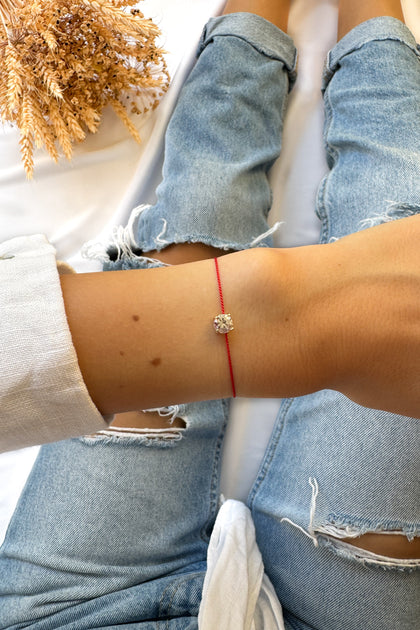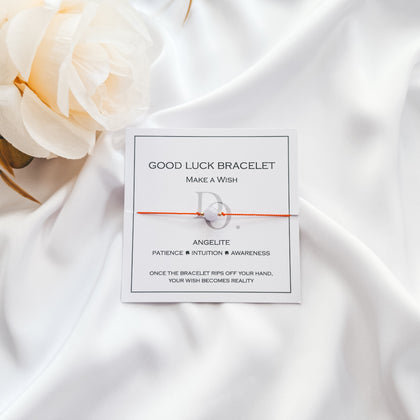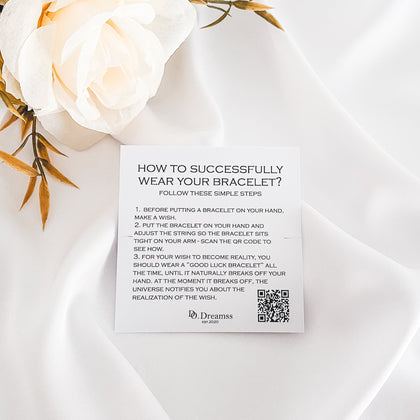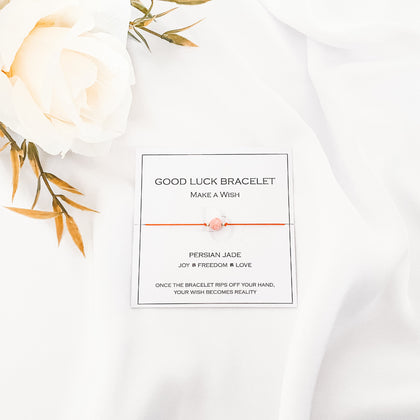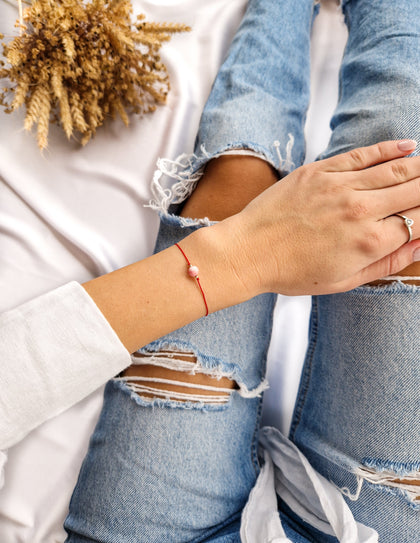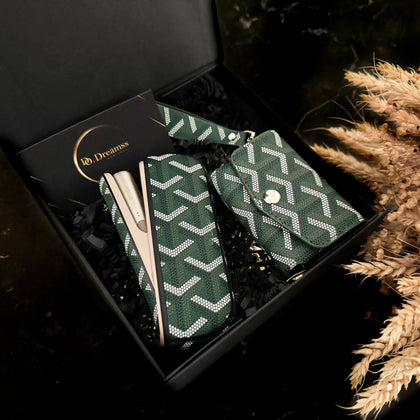The Lucky Edit by Do.Dreamss
Which Hand to Wear Your Lucky Bracelet On? What Traditions Say
Many believe wearing a lucky bracelet can attract wealth, ward off negativity, or enhance personal energy. But as you admire your new talisman, you might wonder – which wrist should you actually wear it on? The answer isn't universal and depends on tradition, intention, and personal preference. Some follow ancient cultural practices while others focus on practical symbolism and comfort.
Throughout this guide, you'll discover the significance of left versus right placement across different traditions, specific recommendations for popular bracelet types, and how to make the most meaningful choice for your specific situation and beliefs. If you're curious about how lucky jewelry reflects protection and good fortune, you can explore more in the world of Do.Dreamss luck and protection jewelry.
The meaning of left hand vs right hand in bracelet traditions
In feng shui, energy practices, and numerous spiritual systems worldwide, the left and right sides of the body are believed to be energetically distinct. This fundamental principle guides many traditions regarding which hand to wear lucky bracelets for optimal benefit.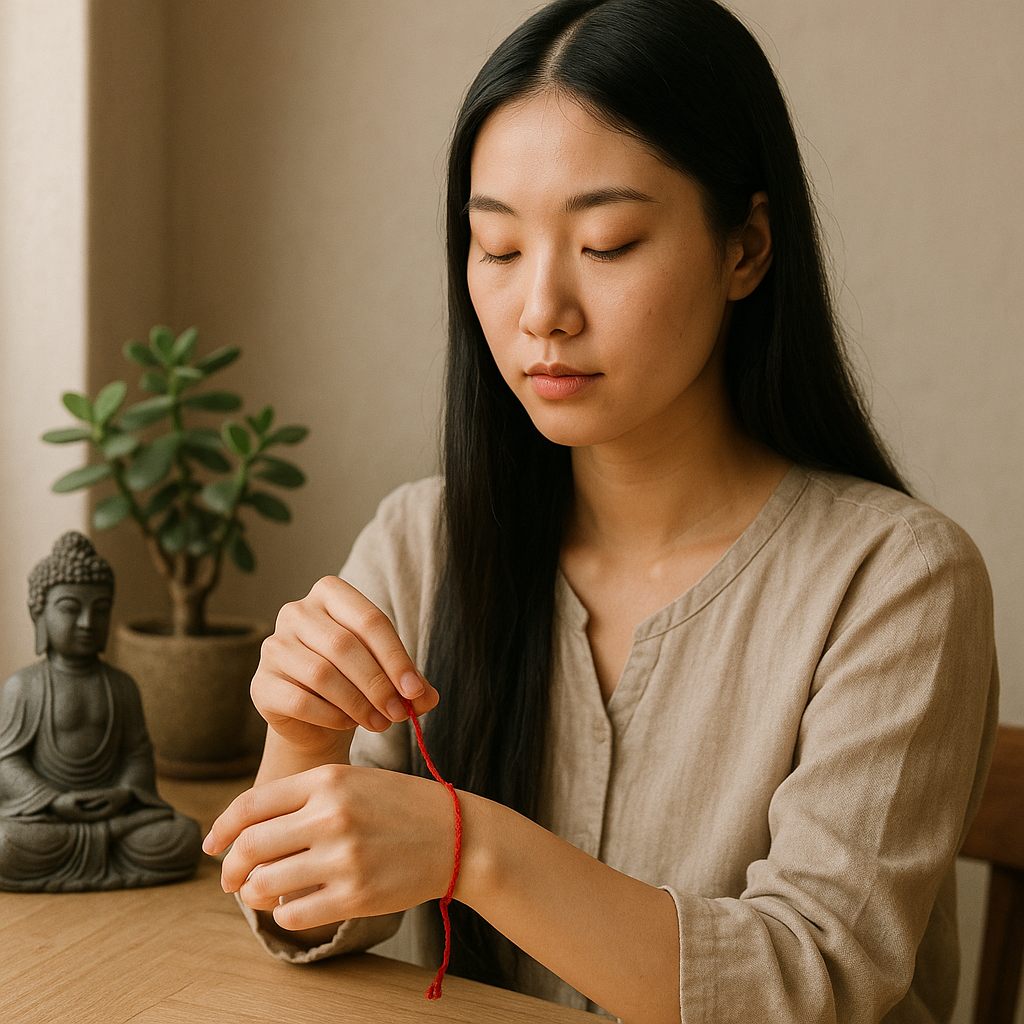
Energy and intention: why left often means "receiving"
Across diverse cultures, the left hand is traditionally considered receptive – designed to draw energy, luck, and blessings inward. Chinese feng shui practitioners view the left side as connected to receiving chi (life force energy), while the right represents projecting or giving energy outward. Similar concepts appear in yogic traditions, where specific mudras (hand positions) differ between left and right to either absorb or release energy.
In Kabbalah traditions, the left wrist (particularly for red string bracelets) connects to receiving protection and blocking negative influences. Many spiritual advisors suggest wearing fortune-attracting jewelry on the left to maximize its ability to draw prosperity toward you.
The right hand, by contrast, often symbolizes action, giving, and outward expression. Some traditions recommend wearing protective talismans on the right to shield against external negativity or to share accumulated blessings with others.
Which hand for different types of lucky bracelets?
Each variety of lucky bracelet comes with its own cultural heritage and traditional placement recommendations. Understanding these can help you honor the intended purpose of your spiritual jewelry.
Red string bracelet: heart and protection
The iconic red string bracelet holds special significance in multiple traditions. In Kabbalah practice, this protective talisman is typically worn on the left wrist, where it's believed to shield the wearer from the "evil eye" or negative energies. The left placement is meaningful as it sits closer to the heart meridian in traditional Chinese medicine.
Buddhist red string bracelets follow similar placement guidelines, with monks often tying them on the left wrist during blessing ceremonies. The vibrant cord serves as a reminder of spiritual protection and commitments while drawing positive energy inward through the receptive side.
Interestingly, some Hinduism-inspired practices suggest the opposite – wearing red string on the right hand for protection and spiritual growth. This highlights how traditions can vary even with similar symbols.
Pixiu, obsidian, and wealth bracelets: attracting fortune
Wealth-drawing talismans follow particular rules regarding wrist placement. The pixiu bracelet, featuring the mythical Chinese creature known for collecting and protecting wealth, is traditionally worn on the left hand to maximize its fortune-attracting capabilities. Feng shui practitioners explain this positioning allows the pixiu to effectively gather prosperity and channel it into the wearer's life.
Black obsidian wealth bracelets similarly benefit from left-hand placement according to energy workers, who suggest this volcanic stone can better absorb and transmute negative energies while drawing abundance when worn on the receiving side. The protective qualities of obsidian are enhanced when positioned to intercept harmful influences before they reach your core energy.
In rare cases where the intention shifts to sharing prosperity or actively protecting others, these talismans might be worn on the right. Some feng shui masters recommend switching a pixiu bracelet to the right hand only after it has been "fed" and energized through proper left-hand wear for at least 21 days.
Jade and cultural amulets: heritage practices
Jade bracelets carry profound significance in Chinese culture, representing purity, longevity, and protection. Traditionally, women wear jade bangles on the left wrist to invite good fortune and health benefits. The smooth, cool stone is believed to maintain closer contact with blood vessels on the left side, allowing its balancing properties to directly influence heart energy.
In some Southeast Asian traditions, however, jade may be worn on the right wrist for protection and to deflect misfortune. This variation demonstrates how cultural context shapes talisman placement.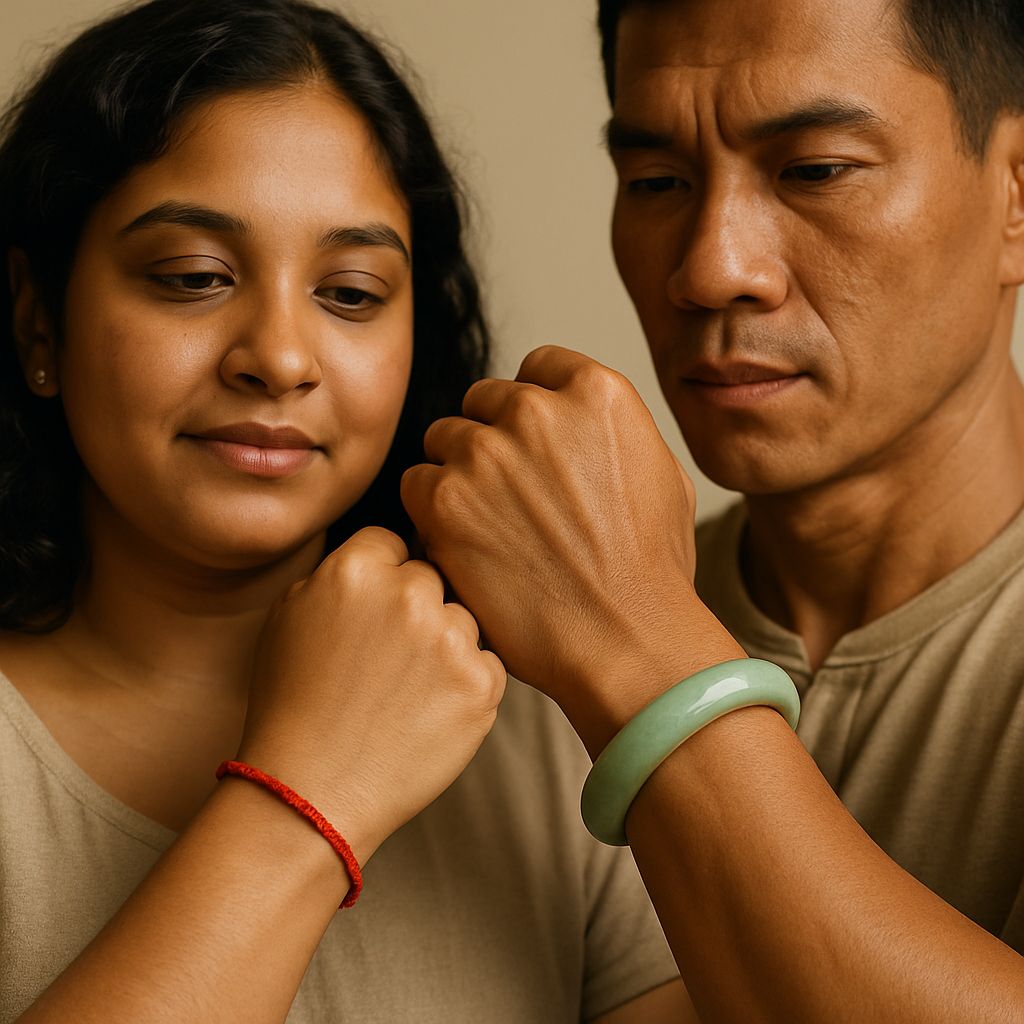
Thai culture sometimes suggests right-hand placement for amulets that guard against specific dangers or negative influences.
Evil eye bracelets, popular across Mediterranean and Middle Eastern traditions, follow similar varied guidance. Greek tradition often favors the left wrist for receiving protection, while some Turkish practices suggest the right hand to actively repel harmful energies.
What to consider beyond tradition: personal belief and modern interpretations
While historical practices provide valuable guidance, many contemporary spiritual advisors emphasize that personal intuition and comfort should guide your decisions about talisman placement. The energy relationship you establish with your lucky bracelet may transcend rigid rules.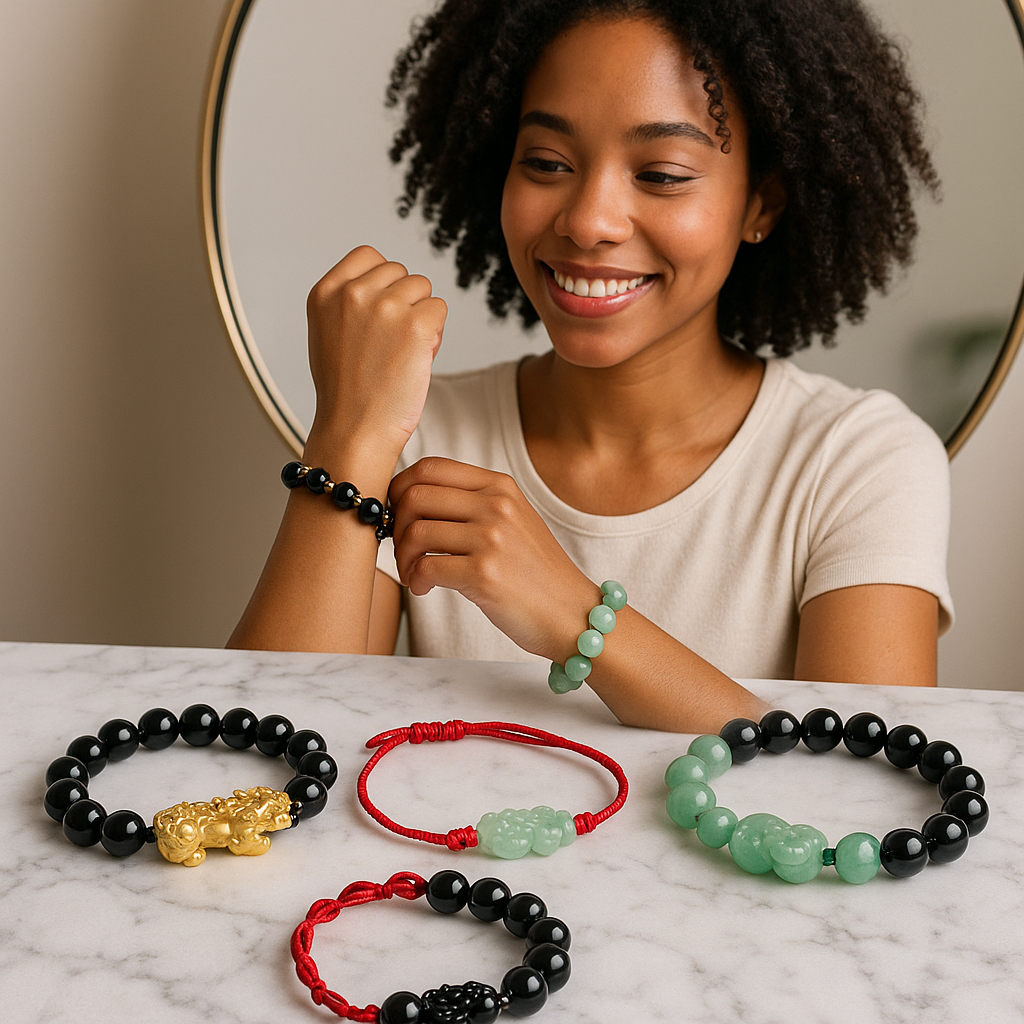
Spiritual jewelry experts increasingly suggest that your intention when wearing the bracelet matters more than strict adherence to traditional rules. If you feel strongly drawn to wear your protection bracelet on a specific wrist contrary to tradition, this intuitive pull might reflect your unique energy needs. Some energy practitioners recommend trying both wrists to see which placement feels more beneficial or comfortable.
Practical considerations also deserve attention. If you're right-handed, wearing a delicate or valuable bracelet on your left wrist reduces wear and potential damage during daily activities. For those with existing wristwear like watches, balancing jewelry between both arms might feel more aesthetically pleasing.
Choosing the right color and placement for your bracelet can reflect your personality and style preferences alongside spiritual intentions. For more inspiration on creating harmonious jewelry combinations, explore tips for creating impactful jewelry combinations.
Care, activation, and best practices for lucky bracelets
Once you've selected the appropriate wrist for your talisman, proper care and activation enhance its significance and effectiveness. Many traditions suggest specific rituals to initialize and maintain the energy of lucky jewelry.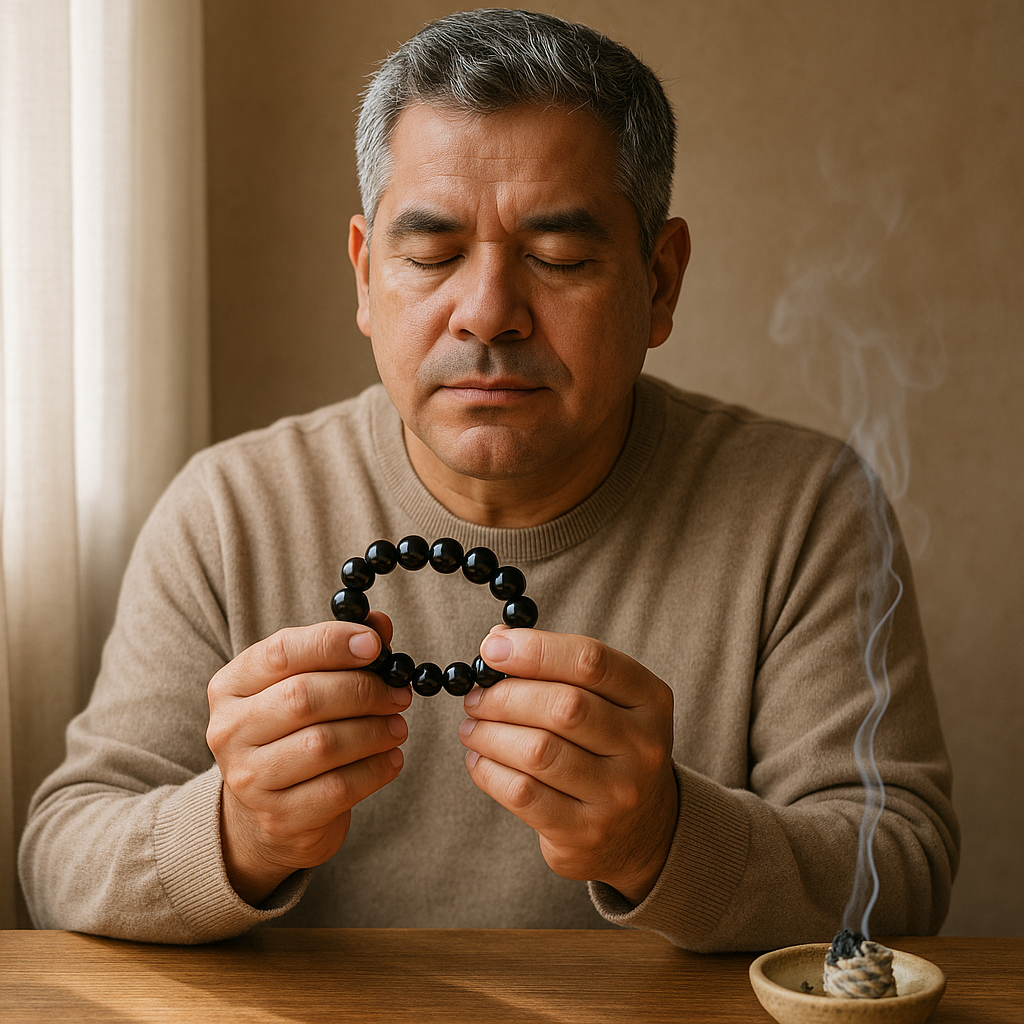
Before first wearing your bracelet, consider a simple activation ritual. For feng shui pieces like pixiu bracelets, many practitioners recommend holding the talisman in natural sunlight while setting clear intentions. Red string bracelets are often blessed through prayer or mantras before being tied. This mindful preparation establishes a personal connection between you and your spiritual jewelry.
Regular maintenance preserves both physical appearance and energetic properties. Cleanse wealth bracelets by placing them in indirect moonlight overnight during the full moon, or purify protective talismans with sacred smoke from sage or palo santo. Some traditions caution against letting others touch your energized jewelry, suggesting this can interfere with the personal energy connection you've established.
When wearing multiple bracelets, consider how their energies interact. Traditional wisdom suggests keeping wealth-attracting pieces separate from protective talismans, or balancing them between left and right wrists according to their purpose. This thoughtful arrangement prevents energetic interference while allowing each bracelet to fulfill its intended purpose.
For those interested in exploring authentic talismans that combine traditional symbolism with contemporary design, discover our handcrafted lucky bracelets specifically created to honor these ancient practices.
Conclusion
The "correct" wrist for your lucky bracelet ultimately depends on a blend of tradition, intention, and personal comfort. While cultural practices provide valuable insights – with the left generally favored for receiving luck and the right for protection or sharing energy – your intuition and the specific purpose of your talisman should guide your final decision.
Understanding the traditional meanings behind bracelet placement enhances your connection to these powerful symbols. Whether you follow ancient feng shui principles for your pixiu bracelet or honor Kabbalistic traditions with your red string, this awareness infuses your jewelry with deeper purpose.
For those beginning their journey with lucky talismans, exploring quality pieces that honor authentic traditions provides the best foundation. Browse our collection of zodiac and protective amulets to find the perfect match for your intentions and energy needs.
Frequently asked questions
Which hand should I wear my lucky bracelet on for wealth?
Typically, the left hand is favored for "receiving" wealth, especially in feng shui and Chinese traditions.
Can I wear more than one lucky bracelet at a time?
Yes—as long as their intentions harmonize, stacking is common, but keep comfort and personal energy in mind.
Does it matter which hand for a red string bracelet?
In many traditions (like Kabbalah and Buddhism), the left wrist is preferred to connect with protection and the heart.
What if someone touches my lucky bracelet?
While some cultures say to avoid others touching your bracelet, you can re-energize or cleanse it with intention or in sunlight.
Is intention more important than tradition for bracelet wearing?
For many modern wearers, personal intention and comfort matter most, but understanding tradition may enhance the meaning.


